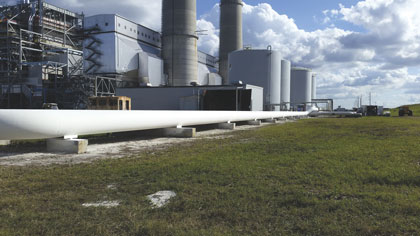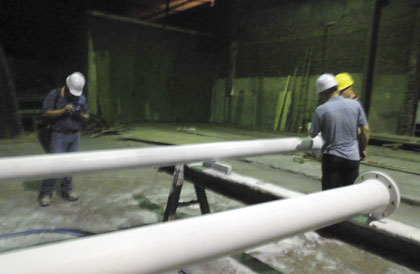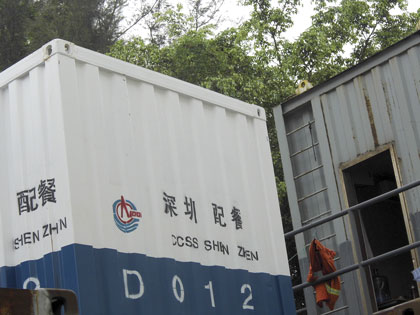With oil and gas prices down by half from their recent highs, operations managers and corrosion engineers are finding that one of the best ways to cut costs and survive the downturn is to eliminate the ongoing costs associated with corrosion control on in-service structures made of carbon steel.
THE COST OF CORROSION
According to the NACE International report Corrosion Costs and Preventive Strategies in the United States, for gas and liquid transmission pipelines alone “the average annual corrosion-related cost is estimated at $7 billion to monitor, replace, and maintain these assets.” This figure quickly multiplies when lost revenue, productivity, and spill or leak cleanup costs are tallied—a hit to the bottom line that the industry struggles to endure when oil and gas prices are so low.
From upstream transit containers, to midstream product transport, storage, and processing, to downstream refining, the challenge has long been to control corrosion on carbon steel service structures. Traditionally, polymer paints and rubber type coatings have been used as physical barriers to keep corrosion promoters such as water and oxygen away from steel substrates. This works until the paint is scratched, chipped, or breached and corrosion promoters enter the gap between the substrate and coating.

Then the coating can act like a greenhouse—trapping water, oxygen and other corrosion promoters—which allows the corrosion to spread. For this reason, such coatings are often reapplied every three to seven years, depending on factors such as rainfall, humidity, and proximity to a marine environment. While stainless steel can be used for tanks or other high-value equipment to resist corrosion, it can be up to six times more costly than carbon steel, as well as challenging to weld, fabricate, and maintain.
Now, a new generation of anti-corrosion coating, called Chemically Bonded Phosphate Ceramics, is poised to cost-effectively stop such corrosion, improve safety, and extend tank, pipeline and equipment life in the oil and gas industry while minimizing maintenance and downtime.
OFFSHORE CORROSION PROTECTION AND BEYOND
With total assets and annual sales revenue of over $1.5 billion, the Energy Development LLC of China National Offshore Oil Corporation (EDC of CNOOC) sought to protect its offshore platform transit containers from corrosion. However, because of year-round exposure to marine conditions, as well as severe collisions due to repeated hoisting and transport, traditional coatings failed rapidly after being put into service. In addition, such coatings had other drawbacks during application: they inefficiently required multiple coats, were toxic, flammable, and emitted VOCs.
To address these issues, the company turned to EonCoat, a spray applied inorganic coating from the Raleigh, North Carolina-based company of the same name. EonCoat represents a new category of tough, Chemically Bonded Phosphate Ceramics (CBPCs) that can stop corrosion, ease application, and reduce production downtime.

In contrast to traditional polymer coatings that sit on top of the substrate, the corrosion resistant CBPC coating bonds through a chemical reaction with the substrate, and slight surface oxidation actually improves the reaction. An alloy layer is formed. This makes it impossible for corrosion promoters like oxygen and humidity to get behind the coating the way they can with ordinary paints.
Although traditional polymer coatings mechanically bond to substrates that have been extensively prepared, if gouged, moisture and oxygen will migrate under the coating’s film from all sides of the gouge.
By contrast, the same damage to the ceramic coated substrate will not spread corrosion in oil and gas facilities because the carbon steel’s surface is turned into an alloy of stable oxides. Once the steel’s surface is stable (the way noble metals like gold and silver are stable) it will no longer react with the environment and cannot corrode.
Visible in scanning electron microscope photography, EonCoat does not leave a gap between the steel and the coating because the bond is chemical rather than mechanical. Since there is no gap, even if moisture was to get through to the steel due to a gouge, there is nowhere for the moisture to travel, which effectively stops corrosion in upstream, midstream, and downstream applications.

The corrosion barrier is covered by a ceramic shell that resists corrosion, fire, water, abrasion, impact, chemicals, and temperatures up to 400 degrees Fahrenheit (204 degrees Celsius). Beyond this, the ceramic shell serves a unique role that helps to end the costly maintenance cycle of replacing typical barrier type coatings every few years.
“If the ceramic shell and alloy layer is ever breached, the ceramic shell acts as a reservoir of phosphate to continually realloy the steel,” explains Merrick Alpert, president of EonCoat. “This ‘self heals’ the breach, depending on its size, and stops the corrosion if necessary. This capability, along with the coating’s other properties, enables effective corrosion protection for the life of in-service structures with a single application.”
A LOOK AHEAD
In next month’s conclusion, we will discuss how oil and gas operation managers or corrosion engineers looking to reduce costs are finding additional advantages to CBPC coatings like EonCoat beyond corrosion resistance.
For More Information
EonCoat is a spray applied industrial coating that prevents rust on carbon steel. EonCoat phosphates the steel it comes in contact with, forming an amorphous magnesium iron phosphate layer. This true alloy—chemically bonded to the steel—is the first line of defense against corrosion. For more information, call 754.222.4919 or visit www.eoncoat.com.
____________________________________________
MODERN PUMPING TODAY, February 2017
Did you enjoy this article?
Subscribe to the FREE Digital Edition of Modern Pumping Today Magazine!



